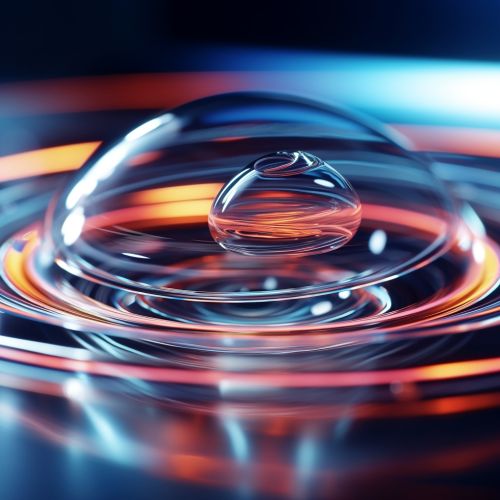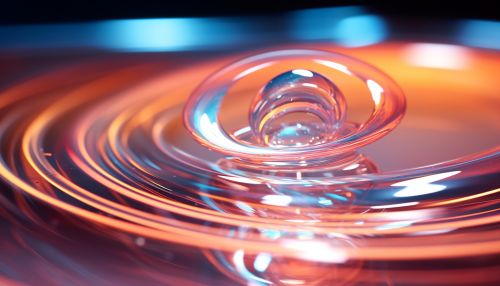The Physics of Superfluid Helium and Quantum Vortices
Introduction
Superfluid helium is a phase of helium, either helium-4 or helium-3, that exhibits unique properties when cooled to extremely low temperatures. These properties, which defy classical physics, are a manifestation of quantum mechanics at a macroscopic scale. Among the most intriguing phenomena observed in superfluid helium is the formation of quantum vortices, which are topological defects in the superfluid state.


Superfluid Helium
Helium-4 and Helium-3
There are two stable isotopes of helium: helium-4 and helium-3, each with distinct superfluid properties. Helium-4, the most common isotope, becomes a superfluid below a temperature of 2.17 Kelvin, a transition known as the lambda transition. Helium-3, a much rarer isotope, also undergoes a transition to a superfluid state, but at a much lower temperature of approximately 0.002 Kelvin.
Properties of Superfluid Helium
Superfluid helium-4 exhibits several remarkable properties, including zero viscosity, the ability to flow without friction. This property allows it to climb the walls of its container and flow against gravity, a phenomenon known as the Rollin film. Another notable property is the ability to sustain persistent currents, which means that once set in motion, a superfluid will continue to flow indefinitely without any external force.
Helium-3, on the other hand, becomes a superfluid in a different manner. It forms pairs of atoms, similar to Cooper pairs in a superconductor, and these pairs form a Bose-Einstein condensate, which behaves as a superfluid.
Quantum Vortices
Quantum vortices are a fundamental feature of superfluid helium, arising from its quantum mechanical nature. They are essentially tiny tornadoes in the superfluid, around which the superfluid circulates.
Formation of Quantum Vortices
Quantum vortices form when the superfluid is stirred. Due to the quantum mechanical nature of the superfluid, the vortices that form are quantized, meaning they have discrete values of circulation. This is in contrast to classical vortices, which can have any value of circulation.
Properties of Quantum Vortices
Quantum vortices have a core where the superfluid density is zero, and around which the superfluid circulates. The circulation around a quantum vortex is quantized, meaning it takes on discrete values. This quantization is a direct consequence of the wave nature of matter in quantum mechanics.
Applications and Implications
The study of superfluid helium and quantum vortices has far-reaching implications in various fields of physics. The properties of superfluid helium provide a macroscopic demonstration of quantum mechanics, while quantum vortices have been used to model other topological defects, such as cosmic strings in cosmology.
